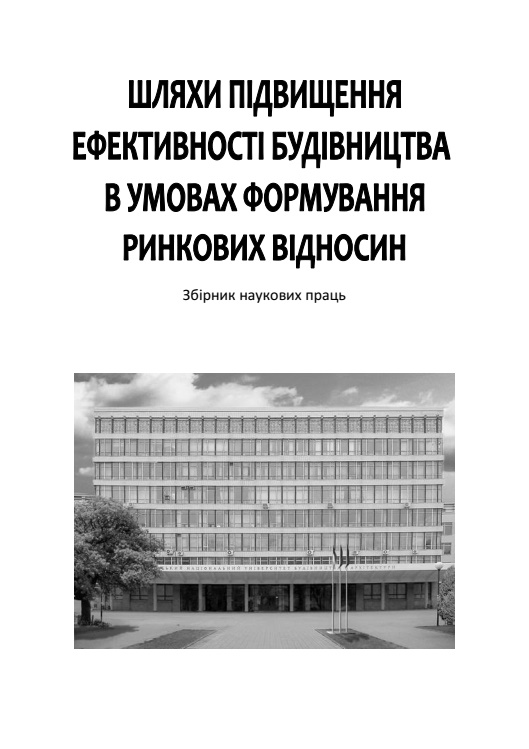Development of operational construction management in modern conditions
DOI:
https://doi.org/10.32347/2707-501x.2021.47(1).44-51Keywords:
management, construction, construction site, resources, planningAbstract
The article highlights the problems that arise in the management process, during the construction of buildings and structures.
Operational management is an important part of a single planning system for construction production and has the following ultimate goals: the implementation of tasks for the commissioning of facilities; volume of construction and installation works; increasing labor productivity, etc.
The function of operational management includes a continuous impact on the timely implementation of the work provided for in the plan. The stage of operational management includes operational planning and regulation, which includes control, accounting and decision-making.
In the process of production, any management decisions related to the implementation of the project are reduced to the establishment of calendar modes of work.
When making plans for a long period, it is impossible to take into account all the factors that may arise in the period immediately preceding the start of work. As we approach the planned deadlines, awareness of the specific situation is constantly growing.
In modern conditions, in the absence of permanent labor collectives in construction organizations, to the previously defined functions of operational planning should be added the function of providing construction with skilled labor. Creating a network of operational management in accordance with the production program of the construction organization, its structure, possible customer requirements, with the use of modern software packages to significantly improve the quality of operational management in construction.
Changes in the process of operational management of construction production should be aimed primarily at eliminating backlogs in the implementation of weekly and daily work schedules. To do this, depending on the causes of the backlog, measures are taken to speed up the work, introduce additional changes, eliminate interruptions in the material support of the work and other measures.
References
Барановська Н.І. Підвищення конкурентоспроможності будівельної організації на основі розвитку її кадрового потенціалу: поняття конкуренції та конкурентоспроможності будівельної організації, кадровий потенціал: поняття, показники оцінки, напрямки розвитку, методика планування. – Кизил: ТувГУ, 2011. – 127 с.
Булат Р.Є. Правові норми та психологічний супровід управління персоналом в будівництві / Р.Є. Булат – СПб: Бізнес-преса, 2010. – 197 с.
Булат Р.Є. Теорія і практика формування готовності працівників будівельних організацій до професійної діяльності: пошук, залучення, оцінка, підбір, найм, адаптація, навчання, атестація, звільнення персоналу, документування кадрової роботи / Булат Р.Є., Мосін М.А . – СПб: Стройиздат, 2008. – 212 с.
Карібова І.Ш. Підвищення кваліфікації будівельників як один з головних важелів зростання продуктивності праці і якості будівельної продукції // Регіональні проблеми перетворення економіки. – 2011. – № 2. – С. 293–299.
Симонова М.В. Управління персоналом в організаціях будівельного комплексу. – Самара: Самарський держ. архітектурно-буд. ун-т, 2010 – 198 с.
Феклістов І.І. Кадрове ресурсне забезпечення інноваційного розвитку будівельних організацій // Економічне відродження України. – 2011. – Т. 28. – № 2. – С. 104–111.
Міністерство економічного розвитку і торгівлі України [Електронний ресурс]: Режим доступу: http://www.me.gov.ua/
Гринчук С.А. Теоретико-методологічні принципи та особливості формування культури персоналу організації // Вісник східноукраїнського національного університету імені Володимира Даля, Луганськ. – № 10, 2009. – Частина 2. – С. 166 –171.
Downloads
Published
How to Cite
Issue
Section
License

This work is licensed under a Creative Commons Attribution 4.0 International License.
Authors who publish with this journal agree to the following terms:
- Authors retain copyright and grant the journal right of first publication with the work simultaneously licensed under a Creative Commons Attribution License that allows others to share the work with an acknowledgement of the work's authorship and initial publication in this journal.
- Authors are able to enter into separate, additional contractual arrangements for the non-exclusive distribution of the journal's published version of the work (e.g., post it to an institutional repository or publish it in a book), with an acknowledgement of its initial publication in this journal.
- Authors are permitted and encouraged to post their work online (e.g., in institutional repositories or on their website) prior to and during the submission process, as it can lead to productive exchanges, as well as earlier and greater citation of published work (See The Effect of Open Access).

